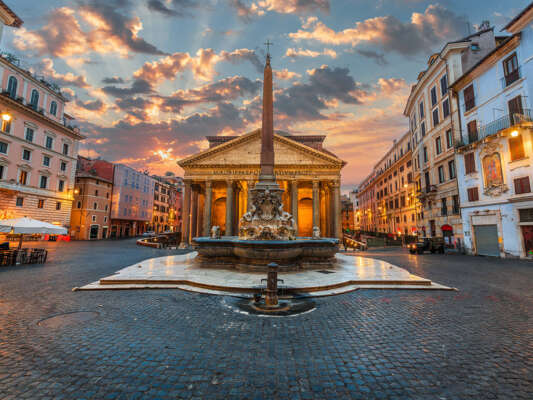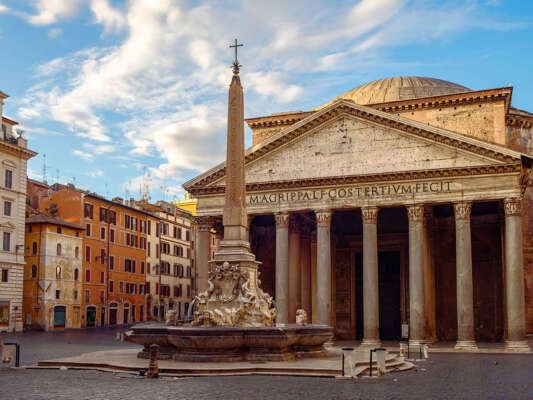In this free video guide, you will learn about the Pantheon in Rome (Roman Pantheon), located in the center of Rome, Italy. Join us on an unforgettable journey through the history, architecture, and secrets of this inspiring monument.
Roman Pantheon – Free Video Guide
The name “Pantheon” is from the Ancient Greek “Pantheion” meaning “relating to all the gods”. Cassius Dio, a Roman senator who wrote in Greek, speculated that the name comes either from the statues of many gods placed around this building or from the resemblance of the dome to the heavens. His uncertainty strongly suggests that “Pantheon” (or Pantheum) was merely a nickname, not the formal name of the building.
Editor’s Choice
The Pantheon (from Greek – “temple of all the gods”) is a former Roman temple and, since 609 AD, a Catholic church (Basilica of Saint Mary and the Martyrs) in Rome, Italy.
It is one of the best-preserved of all Ancient Roman buildings, in large part because it has been in continuous use throughout its history: since the 7th century, it has been a church dedicated to Saint Mary and the Martyrs but informally known as “Santa Maria Rotonda”.
The square in front of the Pantheon is called Piazza della Rotonda. The Pantheon is a state property, managed by Italy’s Ministry of Cultural Heritage and Activities and Tourism through the Polo Museale del Lazio. In 2013, it was visited by over 6 million people.
The building is cylindrical with a portico of large granite Corinthian columns (eight in the first rank and two groups of four behind) under a pediment. A rectangular vestibule links the porch to the rotunda, which is under a coffered concrete dome, with a central opening (oculus) to the sky. Almost two thousand years after it was built, the Pantheon’s dome is still the world’s largest unreinforced concrete dome. The height of the oculus and the diameter of the interior circle are the same, 43 meters (142 feet).
The Pantheon’s large circular domed cella, with a conventional temple portico front, was unique in Roman architecture. Nevertheless, it became a standard exemplar when classical styles were revived, and has been copied many times by later architects.
Useful Takeaways.
- The Pantheon is the best-preserved example of an Ancient Roman monumental building.
- Around 6 million tourists come to visit this place annually.
- One of the greatest artists – Raphael was buried here.
- It has been enormously influential in Western architecture from at least the Renaissance.
- The Pantheon still holds the record for the world’s largest unreinforced concrete dome.
- The history of the building begins in 29 BC with the Roman general Marcus Agrippa as a private temple.
- The Pantheon survived multiple fires and dangers.
- It came through several major reconstructions and rebuildings but still saved the sense of ancient Rome.




